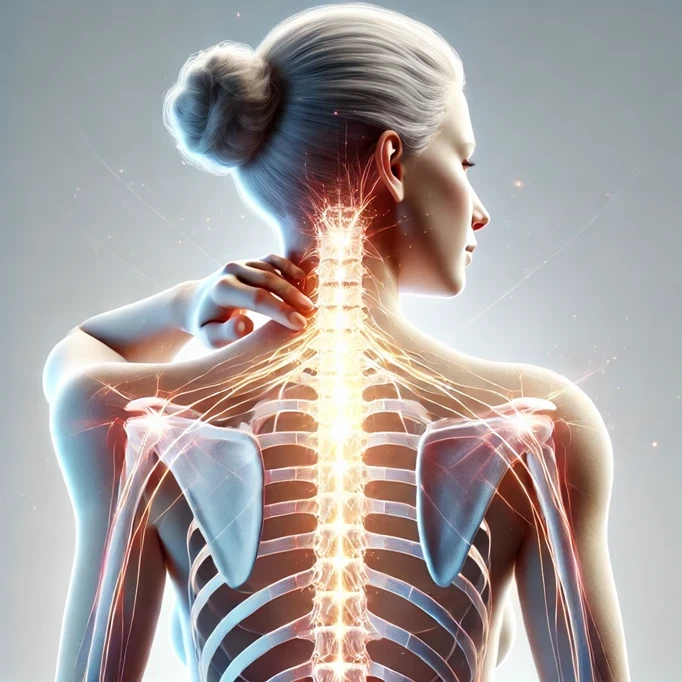How Upper Cervical Chiropractic Helps with Vertigo and Dizziness
Hi everyone, I’m Dr. Reis from Atlas Specific Chiropractic in Hiawatha, IA. As an upper cervical chiropractor serving Eastern Iowa, I frequently encounter patients dealing with the disorienting effects of vertigo and dizziness. These conditions can make everyday activities challenging, from driving on Iowa's rural roads to navigating winter ice. In this article, we'll explore how upper cervical chiropractic provides natural relief for vertigo and dizziness through targeted atlas adjustments. By addressing upper cervical misalignment, this approach offers a non-invasive solution to restore balance and reduce symptoms. If you're searching for "natural treatment for vertigo near me" or "chiropractic care for dizziness in Iowa," let's examine the mechanisms, evidence, and benefits of upper cervical care for these issues.
By downloading the Digital Patient Chart mobile app you can better control your patient portal.
Vertigo and dizziness are often misunderstood, but they stem from disruptions in the body's balance system. Vertigo is the sensation of spinning or movement when stationary, while dizziness encompasses lightheadedness or unsteadiness. Both can result from inner ear problems, neurological issues, or cervical spine dysfunction. In Iowa, where seasonal changes like humid summers or cold winters can exacerbate symptoms, many residents seek effective, drug-free options. Upper cervical chiropractic focuses on the atlas vertebra (C1) and axis (C2), correcting subluxations that interfere with nervous system function and contribute to these sensations.
Understanding Vertigo and Dizziness: Common Causes and Impacts
Vertigo and dizziness affect millions, with causes ranging from benign paroxysmal positional vertigo (BPPV) to Meniere's disease or cervicogenic origins linked to the neck. Cervicogenic dizziness, in particular, arises from upper cervical subluxation, where misalignments in the top vertebrae disrupt signals between the brain, inner ear, and proprioceptive sensors in the neck. This misalignment can irritate nerves, restrict blood flow to the brain, or alter cerebrospinal fluid dynamics, leading to imbalance.
In Iowa, factors like farm work, sports, or vehicle accidents on highways contribute to upper cervical misalignment. Poor posture from desk jobs or repetitive motions can also shift the atlas vertebra, exacerbating symptoms. Traditional treatments include medications for nausea or vestibular rehabilitation, but these may not resolve structural issues. Upper cervical chiropractic addresses the root by realigning the spine, promoting natural vertigo relief without side effects.
Symptoms often include nausea, headaches, tinnitus, or visual disturbances, impacting quality of life. Recognizing the cervical connection is crucial, as studies link neck dysfunction to balance disorders. At Atlas Specific Chiropractic, we use precise diagnostics to identify these misalignments, setting the stage for targeted care.
The Role of Upper Cervical Misalignment in Vertigo and Dizziness
The upper cervical spine is a critical junction, housing the brainstem and facilitating head movement. The atlas vertebra supports the skull, and even minor subluxations—measured in millimeters—can compress nerves or arteries, leading to dizziness. For instance, reduced vertebral artery flow or brainstem pressure can mimic inner ear disorders, causing vertigo.
Upper cervical subluxation often results from trauma, stress, or poor ergonomics, common in Iowa's active population. This misalignment disrupts proprioception, the body's sense of position, contributing to unsteadiness. Chiropractic care for vertigo focuses on correcting these issues through atlas adjustments, restoring alignment and improving neurological signals.
Unlike general chiropractic, upper cervical techniques are gentle and precise, using instruments to avoid forceful manipulations. This is ideal for sensitive conditions like dizziness, where stability is key.
How Upper Cervical Chiropractic Provides Relief
At my practice, treatment begins with a comprehensive assessment, including digital X-rays to detect upper cervical misalignment. Once identified, atlas adjustments gently realign the C1 vertebra, relieving pressure on nerves and enhancing blood and fluid flow. This can reduce vertigo episodes by optimizing the vestibular system's communication with the brain.
The process is non-invasive, with adjustments tailored to each patient. Follow-up care monitors progress, often combining with exercises to strengthen neck stability. Research shows improvements in balance and reduced dizziness after upper cervical interventions. For cervicogenic cases, manual therapy to the upper cervical spine yields significant symptom relief.
In Iowa, this approach is accessible, helping residents avoid long trips for specialized care. Regular adjustments can prevent recurrences, supporting long-term natural treatment for vertigo.
The Science and Evidence Behind Upper Cervical Care for Vertigo
Evidence supports upper cervical chiropractic for vertigo and dizziness. A study on chiropractic care demonstrated improved balance and reduced dizziness in patients with neck pain. Another case highlighted benefits from Orthospinology upper cervical technique combined with vestibular rehab.
Research on spinal manipulation for cervicogenic dizziness showed substantial reductions in pain and dizziness. A systematic review confirmed manual therapy's effectiveness for cervical dizziness. Studies also note improvements in vertigo and balance disorders post-adjustment.
A review of manual therapy found consistent positive outcomes for dizziness symptoms. Chiropractic is helpful for balance disorders and cervicogenic dizziness. These findings underscore upper cervical chiropractic's role in natural dizziness relief.
Benefits of Upper Cervical Chiropractic for Vertigo Sufferers
This care offers several advantages:
- Natural and Non-Invasive: Atlas adjustments avoid drugs or surgery, minimizing risks.
- Targeted Symptom Relief: Addresses root causes like upper cervical subluxation for reduced vertigo frequency.
- Improved Overall Function: Enhances nervous system balance, alleviating associated headaches or tinnitus.
- Long-Term Wellness: Prevents future issues through maintenance care.
- Accessibility in Iowa: Local options in Hiawatha serve rural communities effectively.
These benefits make it a preferred natural treatment for dizziness.
Lifestyle Tips to Complement Chiropractic Treatment
Support your care with these habits:
1. Posture Optimization: Use ergonomic supports to maintain cervical alignment.
2. Hydration and Diet: Stay hydrated and eat anti-inflammatory foods to support inner ear health.
3. Gentle Exercises: Incorporate vestibular rehab moves to build balance.
4. Stress Reduction: Practice mindfulness to lessen tension-related dizziness.
5. Sleep Hygiene: Ensure proper pillow support for neck alignment.
6. Avoid Triggers: Limit sudden movements or caffeine that exacerbate symptoms.
These tips enhance chiropractic care for vertigo.
Why Choose Atlas Specific Chiropractic for Vertigo Relief
Upper cervical chiropractic offers a precise path to managing vertigo and dizziness by correcting misalignments. At Atlas Specific Chiropractic, we're dedicated to Iowa residents' wellness. Visit iowaatlasspecific.com or call our Hiawatha office for a consultation. Let's restore your balance naturally.







Leave a comment